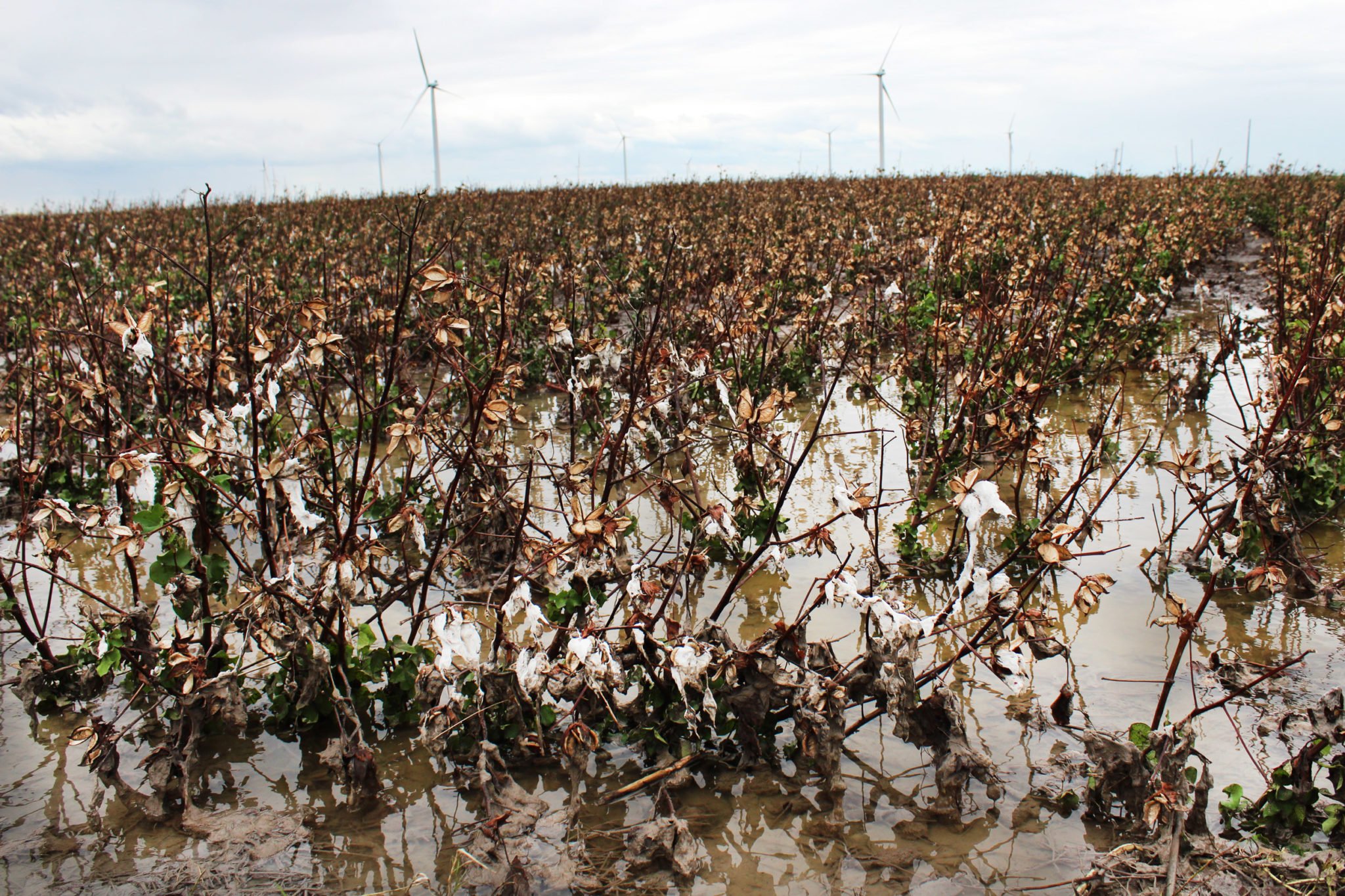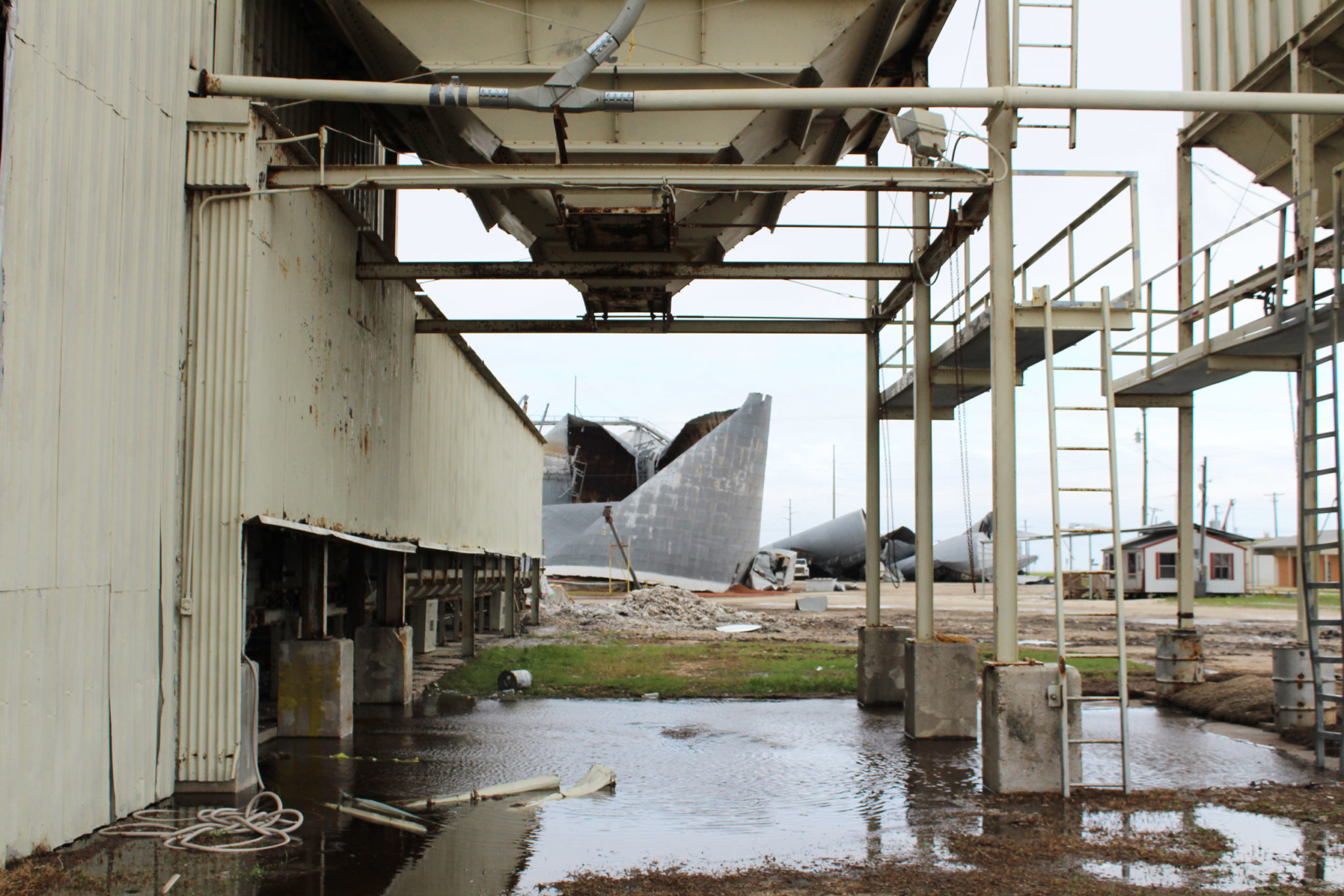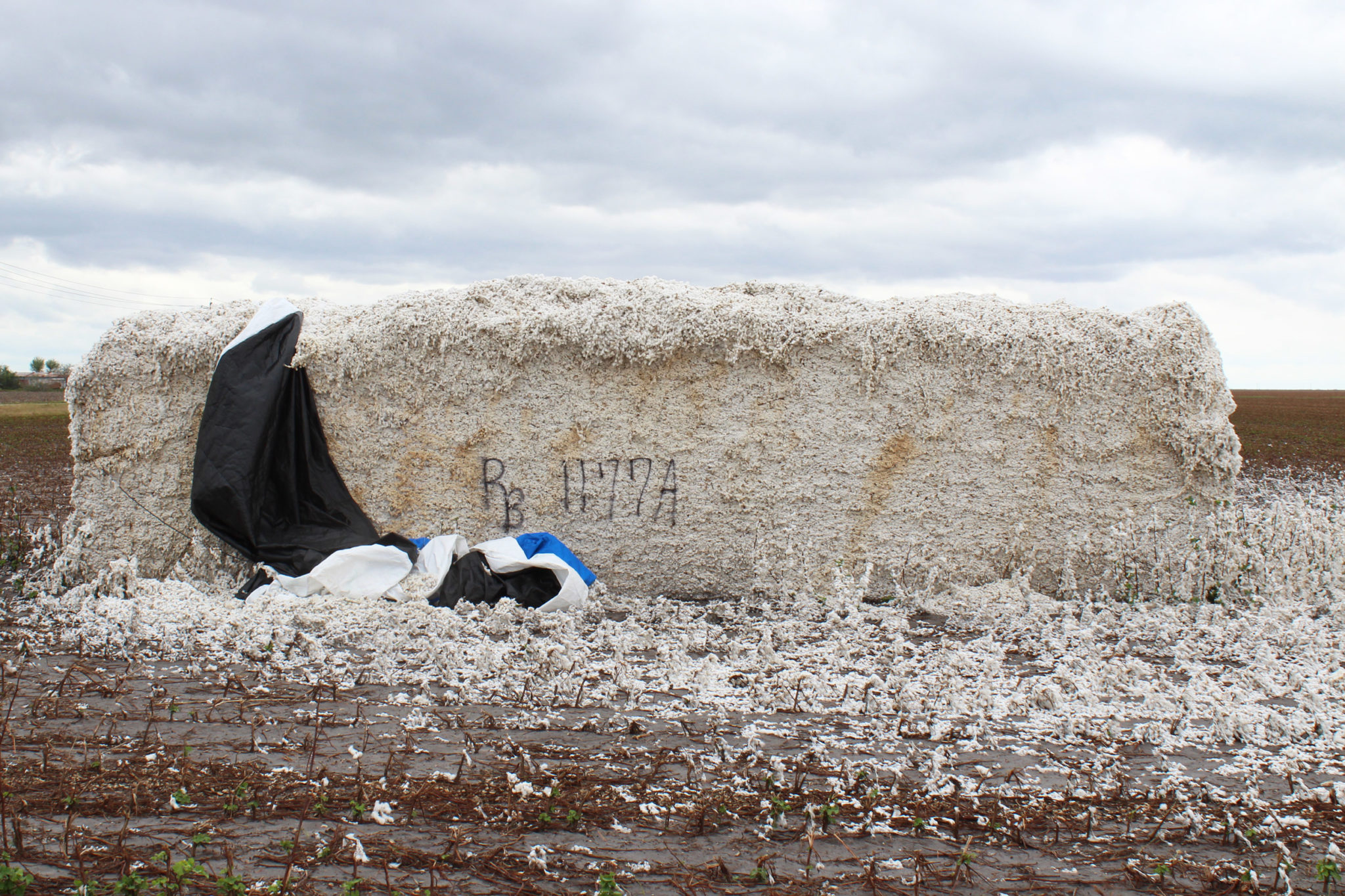
Farmers and Ranchers Take a Hit from Harvey, but the Exact Toll is Unknown
The coastal counties devastated by Harvey are also home to an estimated 1.2 million cows, more than a quarter of the state’s total.


Before Hurricane Harvey crashed through the Coastal Bend, the Midway Gin & Grain Co-op in Taft towered over the flat coastal landscape in San Patricio County. On Monday, the cotton and grain sorghum processing plant was in bad shape, its grain silo a heap of twisted metal.
Harvey dumped close to 14 inches of rain in this agricultural area north of Corpus Christi. Hurricane-force winds tossed a tractor-trailer that was parked at the co-op into the county road, according to Ruben Tomas, a San Patricio resident who said the vehicle belonged to his friend.
Still, the damage could have been much worse for the cotton industry in Nueces and San Patricio counties, farmers told me on Monday. Though some cotton left unpicked before the storm now idles in mud pits along the roadside, rendering it worthless or diminishing its value once it is harvested, producers say they were warned about the storm in time to harvest the majority of the cotton and deliver it to gins before the hurricane hit.


“Everybody did really well this year,” said Wesley Schmidt, who owns a cotton farm in San Patricio County. “We had the best year ever, as far as yield goes.” Agriculture experts had forecast a bumper Texas cotton crop because of favorable weather and high planting numbers.
In the Victoria area, about an hour northeast, cotton farmers were not so fortunate — in Egypt, one producer reported harvesting only 50 of his 1,000 acres. And even in San Patricio and Nueces counties, cotton packed in modules (large rectangular bales covered by a tarp) could still be damaged if tarps are blown off, exposing the fiber to rain.
The coastal counties devastated by Harvey are also home to an estimated 1.2 million cows, more than a quarter of the state’s total. Before the storm, coastal ranchers began loading thousands of head of cattle onto semitrucks, said Andy Vestal, Texas A&M AgriLife extension specialist. But given the size of the herd, many cows had to weather the storm on their own. With water still standing across much of southeast Texas, the losses are unknown at the moment.
“It’s unprecedented, no doubt,” Vestal said. “It’s gonna be a landscape-changer and a life-changer for agriculture.”
The extension service, along with the Texas Department of Agriculture, Texas Animal Health Commission and other groups have formed “animal response teams” to fan out across the area to survey losses. As of Tuesday, the group had not yet reported its findings.


